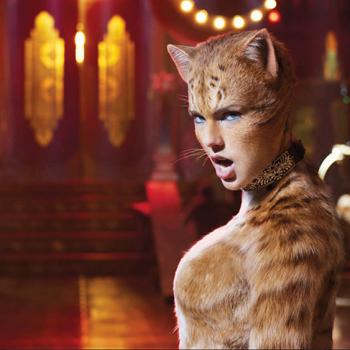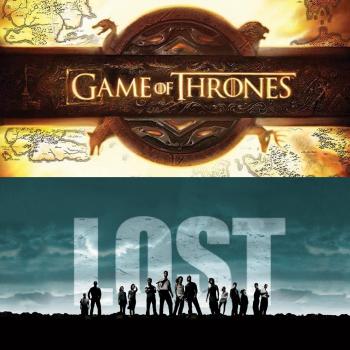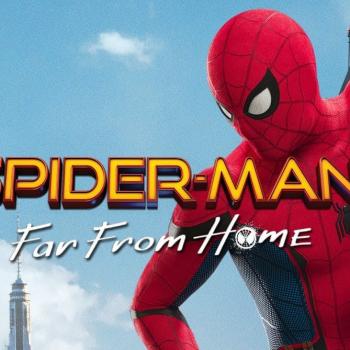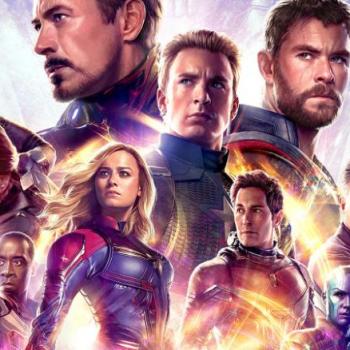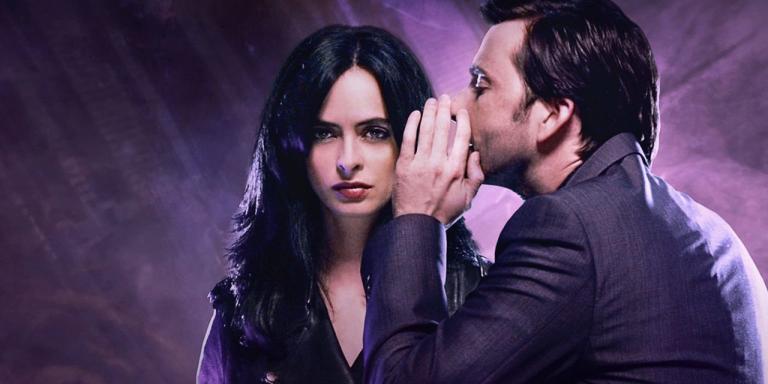
What is the purpose of a villain?
Most story structure classes, including my favorite Aristotle’s De Poetica, will tell you that the purpose of a villain is to thwart the hero’s objective. In fact, in the classic seven story point structure, the villain shows up at points 3 & 5 explicitly to ruin whatever quest the hero is on. Thanos and his progeny, in the recent Infinity War and other MCU movies, have served as classic villains for most of Marvel’s cinematic run.
Which is to say: quite often, the villain serves as just a device to keep the plot going.
To that end, Lady Bracknell from The Importance of Being Earnest and Don John from Much Ado About Nothing are typical villains. They have a nominal, in this case, familial stakes in the action of the play, but largely show up only to throw a wrench in the works. Lady Bracknell appears in the middle of Acts I and the end of Act III of Earnest to disapprove of our protagonist, Jack’s quest to marry her daughter. She refuses marriage in Act I, shenanigans ensue, her disapproval is overcome in Act III, end of play.
Similarly, Don John shows up in Act I of Much Ado specifically to gum up the happiness of his fellow soldiers. In Act II, he incites Claudio’s suspicion and jealousy over Hero’s love. So that by Act III (the midpoint), when Don John casts aspersions on Hero’s virtue, Claudio is primed to publicly denounce her. By Act IV and V, Don John has escaped but his compatriots are around to take the fall. Everyone marries, the end.
These are examples of villains as classic antagonists – as obstacles to get around. As the makers of plot. The big bad bogeyman whose sole job is to enter a scene and say: “No.”
But there’s another sort of villain which I think is far more compelling: and that’s the villain as the shadow self.
The Villain Who Says “Yes”
Another way to look at plot, story structure, and character relation is by the Hollywood Formula, which sets up an antagonist, a protagonist and a relationship character. Let’s define terms:
- Protagonist: Our hero. The main character of the plot. (This does not necessitate that the protagonist is good, only that we are following the protagonist’s journey.)
- Antagonist: The obstacle maker for the protagonist. The person who stands in the way of the protagonist’s wants and needs.
- Relationship Character: The person who reflects back to the protagonist their innermost self.
In something like The Lord of the Rings, we see a typical good/evil, hero/villain breakdown. Frodo is our protagonist, carrying the ring to Mount Doom. Sauron and his minions are our antagonists, trying to get him not to destroy the ring. And Samwise Gamgee is Frodo’s heart and soul, who saves the day by reminding Frodo about the beauty of the world in the simplicity of the Shire.
However, there’s also Gollum – another hobbit, further down the path of possession by the One Ring, whom one could also argue is a relationship character, a villainous shadow self of Frodo, who represents what Frodo might become – is becoming. Who fittingly takes the ring finger of Frodo with him, biting it off as Gollum falls into Mount Doom. Who also, as a shadow self, saves the day.
For an unambiguous shadow self, look no further than Heath Ledger’s Joker in Christopher Nolan’s The Dark Knight. On the surface, it would seem that the Joker would be our villain: standing athwart Batman’s desire to stop being a vigilante. But in the structure of the film, it’s DA Harvey Dent, a man who stands for law and justice, who is actually Batman’s antagonist. Batman wants out of the vigilante game. Harvey Dent, representative of the law, cannot and then will not use the law to relieve the Caped Crusader of his cape. Harvey Dent’s ineptitude stands against Bruce Wayne’s desire to let the Batman go.
The Joker, on the other hand, from the very beginning is Batman’s shadow self, his alter ego, his superhero counterpart who – as a relationship character – proves to Bruce Wayne that Batman is what Gotham deserves. That Batman is who Bruce Wayne is. The Joker’s evil deeds, blowing up a hospital, setting explosives on boats of prisoners and patrons, are not in service of stopping Batman, but of correcting Bruce Wayne’s errant thought that the Batman is unnecessary. Far from saying: “No,” to our protagonist, the relationship character urges the protagonist to say: “Yes.”
The film concludes with Batman defeating Joker, but also being defeated by him and taking the fall for his crimes. The film concludes with Batman becoming what the Joker always said he was: a problematic hero. The shadow and the self integrated into one.
My Villain, My Trauma
Much like Batman and the Joker, shadow selves or relationship villains are often manifestations of the protagonist’s inner trauma.
A prime example of this is the electrifying and horrifying relationship between Jessica Jones and Killgrave (aka The Purple Man). Played to charming perfection by most people’s favorite Dr. Who, David Tennant (whom I can attest is an amazing person in real life, too, having had the joy of meeting him briefly in the early aughts), the first season of Jessica Jones on Netflix was justly hailed as a feminist masterpiece. But what made it work was the exploration of how trauma can literally cripple even the world’s strongest woman.
Shadow selves are allegorical: they reflect back the part of us we want to hide.
For those who may not have watched the first season, Jessica Jones is a superhero with extraordinary strength. She’s also a hard-boiled, whiskey-swilling, foul-mouthed PI. She also, it’s revealed early on, is a victim of Killgrave, a man who can control minds, and who had for a period of time kept Jessica Jones under his thrall: sexually and emotionally, causing her to kill others for his pleasure, literally taking away this strong woman’s will.
The central dilemma for Jessica, then, is whether the self he revealed to her has any bearing on her true self. She can kill and destroy. Does she want to? Did Killgrave just release what was already there? Moreover, she uses sex and triple sec to numb the memory that all her strength couldn’t save her from Killgrave’s merest whisper. Does she like who she’s become in order to cope? Was she happier giving into Killgrave – happier as a person, dependent on him but independent from alcohol, or even the need to make decisions?
One of the most harrowing episodes is when Jessica Jones and Killgrave are all alone in her childhood home: a perky suburban existence, and the promise of normality if she would just give in is presented to her. In this case, Jessica’s shadow self presents as lightness and a white picket fence. A freedom from all this drab justice she keeps demanding of the world. Her relationship villain, her shadow self grins at her with that David Tennant cheeky grin, winks, and whispers: “Just say yes.”
When Jessica inevitably kills her shadow self, there is once more the promise of integration: she is a killer. But she does not have to give up her quest for justice or her willpower to choose who she will execute and who she will save. She is in charge of her own decisions once again. And yet…everything Killgrave said about her is still true. And there are miles of trauma to go before she sleeps.
Season Two of Jessica Jones tried to tap into this shadow self again by introducing the villain as Jessica’s own mother, who also has super strength – even more than Jessica! Who, like Jessica last season, is completely out of control. And whom Jessica must choose to destroy or save. On paper, the idea looks great. But in execution – in part because of some terrible dialogue and mediocre casting – the second season doesn’t work. And that’s because, once again, when you’ve set up a shadow villain, you’ve set up allegory. And if you’re going to keep telling that story – you’ve got to get the allegory right.
The best episode of Season Two brought back Killgrave, this time as a literal manifestation of Jessica’s mind, and once again he was thrilling, because he is the shadow self of Jessica. Her mother, however, is a manifestation of what Jessica’s already worked through.
Moreover, Jessica doesn’t fear strength – she knows her own strength, that’s where she thrives. What Jessica fears is vulnerability. It’s why she doesn’t want to be caught caring for someone. It’s why she tries to deaden her emotions. It’s why Killgrave is a greater threat than any other villain with bulging muscles and a tank full of sharks with laser beams.
If Jessica’s mother had been mundane. Worse, if Jessica’s mother didn’t care about her. Or – in the comic take – if Jessica’s mother was a cookie-baking horror – drawing Jessica back to the white picket fence world, then the second season would have thrived.
All of which is to say: the shadow self villain does not always present as Darth Vader. Sometimes the shadow self presents as the false light of Heaven here on earth.
The shadow self as trauma may try to convince the protagonist that there is no trauma. That there’s no point in doing the hard work to break free. That the status quo is perfectly fine. That you can go quietly into that dark night.
My Villain, Myself
One last variation of building villains in stories, is when the protagonist could say that they are “The Villain In My Own Story.” And like the music video suggests, Crazy Ex-Girlfriend is doing this gorgeously over their four season run.
In season one, we’re set up to presume that Rebecca Bunch is our protagonist – and she is. She even has the big ingenue song as our very first musical number of the series. Although, if you listen to the bridge you hear a sinister chord structure that gives us a clue that Rebecca Bunch is not a hero. So that, by the time the sinister chords become their own song at the end of season one in “I’m the Villain In My Own Story” (see above), we’re introduced to the realization that Rebecca and her shadow self are one.
In fact, almost everyone in Crazy Ex is a villain, an enabler of Rebecca’s worst self. For example, her best friend, Paula, coddles Rebecca when she should challenge, assists insane and criminal schemes rather than shutting Rebecca down, and even actively works against Rebecca’s mental health treatment and processing of trauma. Rebecca’s boyfriends also bring out Rebecca’s shadow self: like Killgrave, promising a life free of struggle with Josh Chan’s “We’ll Never Have Problems Again,” or Nathaniel Plimpton’s “Nothing Is Anyone’s Fault.” It’s only the boyfriend who got away is Greg, who sings the heroic and, for our purposes, antagonistic: “It Was a Shitshow.” In fact, the proper antagonists to Rebecca’s story are her therapists who actively discourage her shadow self from manifesting. (Well, and Trent who is Gollum to Rebecca‘s Frodo.)
The hope for Rebecca’s story turning out well, then, begins when Rebecca is nearly overcome by her inner villain, and attempts to commit suicide. This is a wake-up call that leads her to last season’s cliffhanger, where she finally admits in court to “Being responsible…I mean, guilty. I plead guilty.”
My Villain, My Victory
Because the beauty of a shadow self, relationship villain is that these are the stories of redemption.
Far from the mustache-twirling Snidley Whiplashes, or even the Lady Bracknells or Don Johns, relationship villains force us to confront ourselves. And the only happy ending is when we find a way to either break free of their control, or to integrate the parts of us that scare us, in a healthy manner back into ourselves.
Because the terrifying thing about relationship villains, is that they’re not wholly wrong. The world would be better if Bruce Wayne could cede justice into the hands of those who say they work for it. The white picket fence world is much nicer to live in than the world that demands constant vigilance in the service of doing what’s right. Because the world where running after boys indiscriminately instead of working on our own underlying issues is more fun.
Shadow selves tempt us with a way to stop fighting.
Shadow selves in reality are those voices that say: “Don’t speak up. Just be quiet. It’s easier.” Or, “Don’t work on your problems. Don’t cause waves. Be nice.”
Even when shadow selves are overtly evil, such as Christian Slater’s mass-murdering boyfriend in Heathers, when their “Yes,” it a temptation to do overt evil, it’s usually a temptation for the easier option. For some sort of personal annihilation. “Just stop the world. Get off.”
Shadow selves are an invitation to look closer at our own lives and see where we’ve been the villain in our own story, or to identify those toxic personalities that are working to control us or bring out the worst in us.
Shadow selves are an invitation to heroism, so that we don’t become the shadow, but instead do the painful work of coming truly into life.
 Image courtesy of Marvel/ABC/Netflix.
Image courtesy of Marvel/ABC/Netflix.
This is your second promised article of the week. Want to get three articles a week? Become a patron over on Patreon for as little as $1/month!



